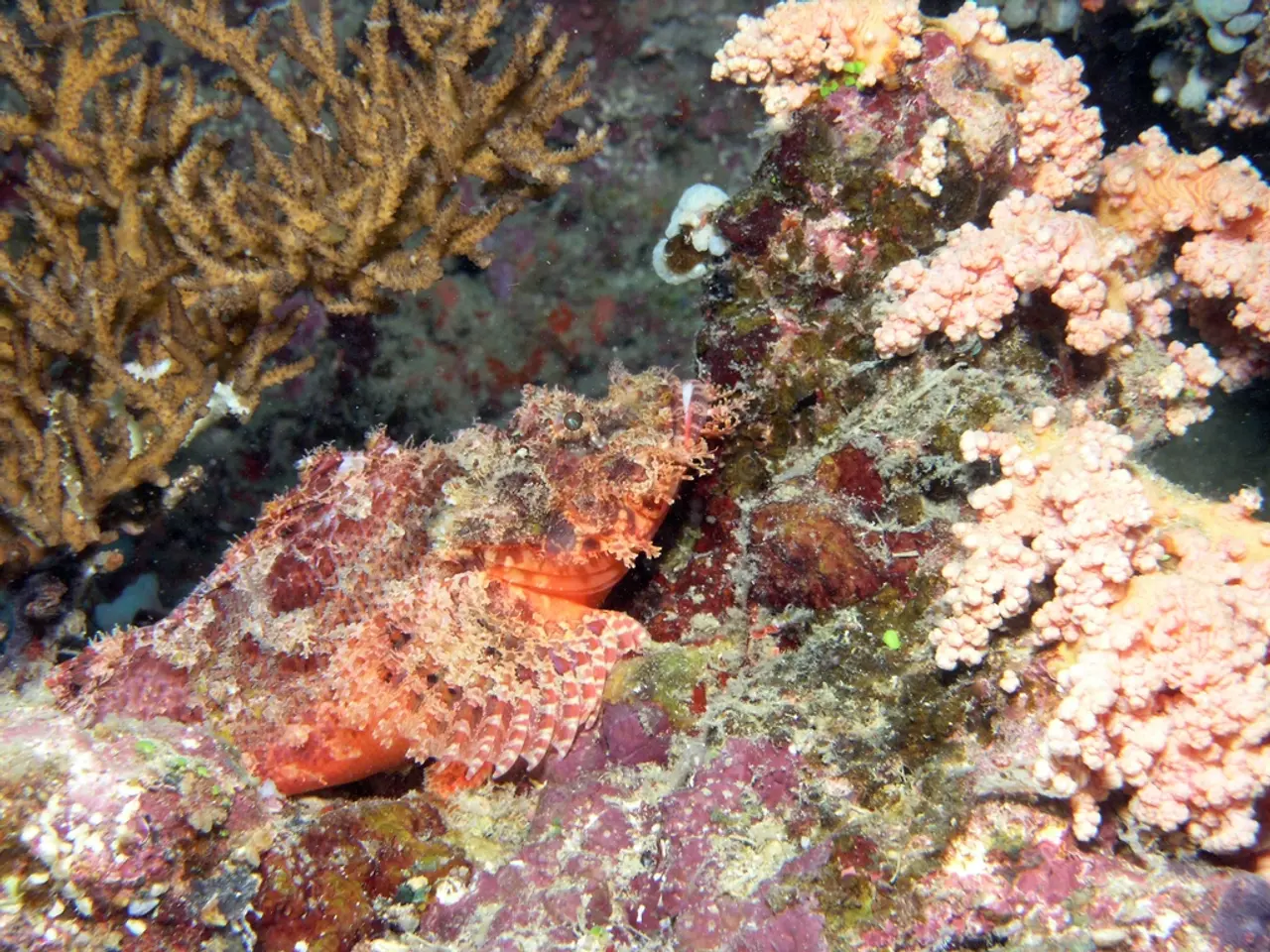Deep Underwater Discovery: Scientists Uncover Remarkable 'Dark Oxygen' at a Depth of 4,000 Meters Beneath the Sea
In the vast expanse of the Pacific Ocean, a 4.5 million-kilometer-square area known as the Clarion-Clipperton Zone (CCZ) has been the subject of recent scientific interest. This region, located between Hawaii and the western coast of Mexico, is renowned for its immense collection of potato-sized rocks called polymetallic nodules.
A study led by Andrew Sweetman, a deep-sea ecologist with the Scottish Association for Marine Science, and published in the journal Nature Geoscience, has reported a surprising discovery about these nodules. The researchers found that these nodules produce oxygen 4,000 meters below the surface, where sunlight can't reach, a phenomenon they've dubbed "dark oxygen."
This unexpected source of "dark oxygen" redefines the role these nodules play in the CCZ. The polymetallic nodules are rich in nickel, manganese, copper, zinc, and cobalt, elements vital for the batteries needed to power a green energy future. This discovery adds fuel to the ongoing debate over what to do with these nodules.
Some view them as a potential solution to energy problems, while others advocate for a moratorium or precautionary pause to conduct more research. Lisa Levin, from Scripps Institution of Oceanography, emphasizes the importance of furthering independent deep-sea scientific research to inform deep-ocean policy.
The International Seabed Authority (ISA) Council is currently negotiating with key players on deep-sea mining regulations. The debate over the use of polymetallic nodules continues, with the production of oxygen by these nodules challenging the traditional understanding of how Earth's oxygen supply began.
Disrupting marine ecosystems, as shown by the CCZ study, could lead to unforeseen consequences. As we approach a critical point in the future of the world's oceans, the decision between conservation and exploitation becomes increasingly important.
Read also:
- Tata Motors Establishes 25,000 Electric Vehicle Charging Stations Nationwide in India
- Tesla's Nevada workforce has escalated to a daily output of 1,000 Powerwall units.
- AI-Enhanced Battery-Swapping Station in Southeast Asia Officially Opens Its Doors
- G7 leaders convene prior to the upcoming Hiroshima Summit, under the guidance of JAMA heads.








